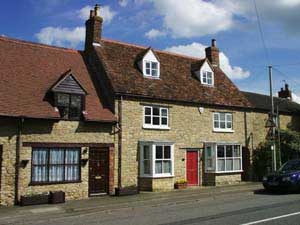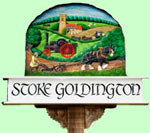The persecution of the protestant Huguenots in Europe in the late 16th and 17th centuries resulted in the first large-scale flow of immigrants into England. Many of them settled in North Buckinghamshire, bringing their lace-making skills with them.
Although at one time lace-making was a fairly profitable employment, this trade fell away badly around the 1820s and many local people suffered as a result.
The cause of this was John Heathcoat’s 2nd Bobbin Machine in 1814. Early in the century earnings were from 1s. to 1.6d. a day.
The 1841 Census shows that, of the 800 or so villagers living in Stoke Goldington, some 247 were classified as lace makers.
The introduction of the new lace making machines meant that hand-made lace became less economically viable and by the 1901 Census the numbers in Stoke Goldington had been reduced to 39.
In 1903 Mr Harry Armstrong, who was a draper in Stoke Goldington High Street, set up the Bucks Cottage Workers Agency to enable the local lace workers in North Bucks to compete with mass produced lace and be able to supplement the meagre farm workers’ wages read more…

Harry Armstrong’s Drapery in the High Street
Notes on the effects on children’s education:
Stoke Goldington was in the lace-making area of Buckinghamshire, which accounts for the number of children employed at home at lace making. Children as young as five or six years old would be sent to the lace-schools to learn how to make lace.
The Records of the National Society relate that
“in 1818 the Rev. Wm Drake commented that the poorer classes would be unwilling that the education of their children should interfere with the manufacture of lace on which they are employed”.
According to the National Society, about this time there were about 10 lace schools “where about 63 children were taught to read”.
Graham Warren said that his mother received her entire education in one of these schools, sited in an upstairs room in a cottage adjoining Mrs Fanny Clark’s house in High Street, Stoke Goldington. This information was corroborated by Mrs Clark herself and also by Mrs Dorrill of Tap Yard.
Cecil Darby stated that his grandmother ran a lace school…
“I’m told she was a tartar” he said. “She used to push the children’s faces amongst the pins if they were not attending”.
Click here for details of the first schools in Stoke Goldington
